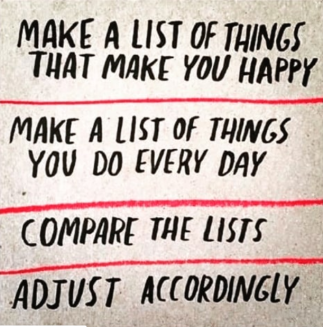I don’t know about you, but my dream is to have a little ‘Plotting Shed’ out at the end of my garden where, every morning, after walking the dog and thinking about characters and story ideas, I spend an hour writing; blissfully free from distractions. Then, after lunch I spend another hour or so in the ‘Shed’, editing and blogging and generally getting stuff done, after which it’s another walk with the dog to signal the end of the ‘working’ day.
Sounds ideal, doesn’t it?
-

-
My Writing Corner (with view)
Well, currently I don’t have a shed. I write on my writing desk in the corner of our bedroom where it’s cluttered (though it does have an excellent view across to Manchester). I also don’t write in the morning. Why? Because on what would be my writing days I generally spend an extra hour in bed recovering from a busy day at the ‘regular’ job.
But, I know I CAN write in the morning. Sometimes I set my alarm, take a cup of tea back to bed, and open up my WIP before I even get dressed. That works for me. So, I know if I’ve got a writing goal then this is the best time to commit to it. Editing, however, is most definitely an afternoon task.
What’s the Ideal Writing Schedule?
Imagine for a moment, your own ideal writing environment. Close your eyes for a second and just picture it. Are you at a desk, in bed, or in the garden? Do you have pen and paper, or a laptop, or even an audio-recorder? Is it in the morning, the afternoon, or late at night? If there were no obstacles, or chores, jobs, children, or spouses; how would you choose to write?
If you can figure out what you believe would make you the happiest writer you can be, then you can start to work toward building that ideal.

Understanding your own writing schedule – not just what it is now, but what it would be if you had the choice – is significant when it comes to productivity as a writer. Knowing that I do better ‘creating’ in the morning, versus the afternoon slump when I focus on what’s already on the page so I don’t have to use my imagination, means that I get more done. So, I don’t sit at my desk trying to conjure up the muse at 3pm when she’s gone for a nap.
Permission to Experiment
Sometimes, the key to finding that ideal writing schedule is to experiment. Try writing in different places at different times. Notice when the words flow and determine what it is about the environment that is supporting that burst of creativity. Do the same for different aspects of your writing.
- When is the best time to create versus editing?
- How long can you work for before needing a break?
- Where do you switch off and concentrate on you writing?
- How can you support the process? Pen and paper for exploring ideas, or open Word document for typing?
When finding it a challenge to write, I always have a ‘low-energy’ task on hand – like scheduling social media posts – so that precious time at my desk isn’t wasted. As I write this, I’m in a local cafe drinking a Caramel Latte because I know that at home, blogging will always fall to the bottom of the list.
Failure is Good
Give yourself permission to experiment with these tasks for a month, and allow yourself the guilt-free pass if these don’t work out as intended. Failure isn’t a bad thing – it gifts us valuable insight into how we can move forward. So many people are afraid of failure, yet we should embrace it as a part of our personal development process. Provided you reflect on it and take learning away from it, effort – irregardless of result – is never wasted. And, you might find that the ideal you dreamed of, really isn’t all that ideal in practice. I surprised myself when I discovered I could write ten minutes after waking up; and the glow it gave me for the rest of the day was entirely unexpected. But it works, for me.
Arm yourself with the knowledge about how you write, and you’ll feel empowered and motivated to use this to your advantage. Then, whatever time you have available for your writing you know that you’re giving it your best.
Now Try This!
Identify all the different types of writing tasks that you might have and determine what type of energy you need to complete them. Are they high-energy, high-creative tasks, or low-energy, low-creative tasks?
Next mark out all the time you have for completing these tasks – consider time available, place, distractions, and time of day.
Then, play with this schedule and see how each of the tasks fit with the natural rhythms of your day/week/month. Try and determine what type of task works best when, and with this information schedule your ideal week!
